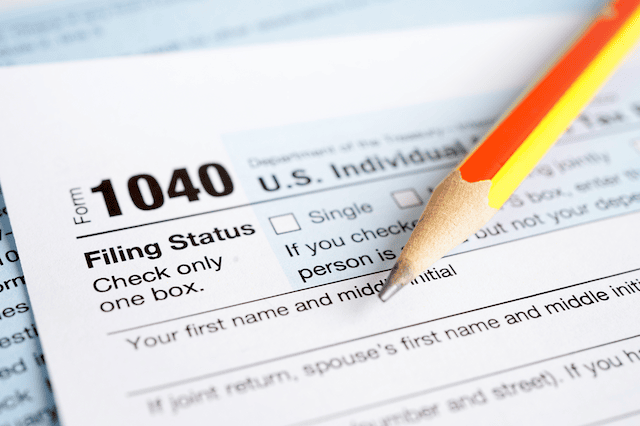It’s that time of year again. Time to collect your W-2 and 1099 forms. Time to dig up receipts and financial statements from last year. Time to catch up on new tax laws that might affect you.
Yep, it’s time to file your taxes again.
There are two basic ways to get your taxes done: You can hire a CPA or other tax professional to complete and file your tax return for you, or you can do it yourself. It can take a lot of time and effort to find a reliable tax preparer. And then they don’t come cheap. That’s why a lot of people choose the DIY approach and file their own taxes.
And, of course, you want to save as much money as possible if you’re handling your own tax return. Fortunately, there are a number of ways to file your taxes for free this year. In most cases, there are eligibility requirements that must be satisfied to file a free federal tax return. However, there are a few options that are open to everyone (or at least everyone living in a certain location).
If filing your taxes for free sounds good to you, let’s explore the various options available for the 2024 tax season. Some are better than others, but I’m sure there’s a no-cost filing method that works for you.
1. Free Commercial Tax Software

You’ve probably heard of TurboTax, H&R Block, TaxSlayer, and other commercial tax software products available for sale. But did you know that many of these companies offer free versions of their software?
You generally must have a simple tax return to use these free versions, though. People with more complex tax situations must pay to use an upgraded product. For instance, you might not be able to use a free version of commercial tax software if you have self-employment income (including from a side gig), unemployment income, capital gains, or rental income. You also might not qualify for the free edition if you want to itemize or claim certain other tax breaks (e.g., the earned income tax credit).
The requirements vary from company to company. So, make sure you check to see if you’re eligible for the free edition before you start your return. Otherwise, you might find out at the end of the process that you don’t qualify for the free version and will be asked to pay a fee to actually file your return.
Also check to see if a free state tax return is available, too. In most cases, you’ll have to pay for that extra return.
2. IRS Free File Program

If your 2023 adjusted gross income (AGI) is $79,000 or less, you might be able file your tax return for free using private software under the IRS Free File program. This program is a public-private partnership between the IRS and commercial tax software companies that have joined the Free File alliance (many of which provide their own free software, as noted earlier).
Qualified taxpayers can go to the IRS’s Free File website to find a software company offering tax preparation software for free. However, you must pay close attention to each company’s eligibility requirements. Depending on your situation, you might not qualify for a free tax return even if your income is below the income threshold. Eligibility rules for each program and a selection tool are available on the IRS website.
Also check to see if you can file a state tax return for free with the software company you select. Many of the IRS Free File partners will charge a fee for state tax preparation. However, any fees for state tax returns must be disclosed by the software company.
3. IRS Direct File Pilot Program

There’s a brand-new free filing option this year from the IRS—the Direct File program. This is only a pilot project to test whether the IRS should offer its own tax prep software. It will only be available for a very limited number of early filers this year. According to the IRS, the pilot program “will be rolled out in phases as final testing is completed and is expected to be widely available in mid-March to eligible taxpayers.”
The software was developed by the IRS, but it’s similar to commercial tax prep software products already on the market in that it uses an interview-based, question and answer format. Unlike the IRS Free File program, there are no AGI limits and you’re filing directly with the IRS (not through a third-party software provider). However, as a pilot program, the IRS software is only available to taxpayers with relatively simple tax returns in a limited number of states.
The Direct File pilot program is only available to taxpayers in 12 states: Arizona, California, Florida, Massachusetts, New Hampshire, New York, Nevada, South Dakota, Tennessee, Texas, Washington, and Wyoming. Of those, residents of Arizona, California, Massachusetts, and New York won’t be able to file their state tax returns through the Direct File program. However, the IRS program will guide users in these states to state-supported software that can be used to file their state return. The other states participating in the pilot program don’t have an income tax.
As noted earlier, taxpayers will need a simple federal tax situation to participate in this year’s Direct File pilot program. For example, the software is not an option if you:
- Have self-employment, business, or certain other types of non-wage income
- Interest income exceeding $1,500
- Itemize deductions
- Claim other certain credits like the child and dependent care credit, Saver’s Credit, or premium tax credit
4. IRS Free Fillable Forms

If your income is too high for the IRS Free File option, and you don’t live in a state offering the IRS Direct File pilot, you can still use the IRS’s Free File Fillable Forms to complete and file your federal tax return online without having to worry about an AGI threshold.
There are some downsides, though. First and foremost, there’s no step-by-step guidance. So, if you’re not comfortable figuring out things on your own, the Free File Fillable Forms are probably not for you. In addition, only basic calculations are handled by the program, and you can’t make changes once you submit a form. The Free File Fillable Forms don’t include state or local tax forms, either.
5. IRS Volunteer Income Tax Assistance (VITA) Program

You might be able to get a free federal tax return through the IRS’s Volunteer Income Tax Assistance (VITA) program, which offers basic tax return preparation to qualified individuals at no cost.
Free tax-preparation services through the VITA Program are generally available to:
- People who generally make $64,000 or less
- Persons with disabilities
- Limited English-speaking taxpayers
To get this free service, you must visit a VITA site, which are typically located at community centers, libraries, schools, and similar facilities. The sites are run by IRS partners and staffed by volunteer tax preparers who are certified by the IRS. Use the online VITA Locator Tool or call 800-906-9887 to find a VITA site near you. An appointment is often required.
6. IRS Tax Counseling for the Elderly (TCE) Program

The Tax Counseling for the Elderly (TCE) program is similar to the VITA program, except that it’s aimed at taxpayers who are at least 60 years old. For example, they specialize in tax issues unique to seniors, such as the taxation of Social Security benefits.
As with the VITA program, TCE sites are operated by organizations that partner with the IRS. The IRS certifies the volunteer tax preparers, too. To find a TCE site and make an appointment, use the TCE Locator or call 800-906-9887 (it’s the same tool and phone number used by the VITA program).
Also note that many of the TCE sites are operated by the AARP Foundation’s Tax Aide program. To locate an AARP TCE Tax-Aide near you, use the AARP Site Locator Tool or call 888-227-7669.
7. MilTax Software

MilTax is free tax software available to members of the military, qualifying veterans, and their family members. According to the software provider, MilTax is specifically “designed to address the realities of military life—including deployments, combat and training pay, housing and rentals, and multistate filings.”
There are no income limits that restrict use of the software by eligible taxpayers, who can use MilTax to prepare and file one federal tax return and up to three state returns for free. Personalized support from tax consultants is available, too.
Eligible taxpayers can access the software through the MilTax website. VITA sites on military installations and elsewhere might also have access to the MilTax software. Anyone using MilTax must verify their eligibility through the Defense Enrollment Eligibility Reporting System each time they access the MilTax e-filing software.
Related: Child Tax Credit FAQs [What Every Parent Needs to Know]
8. Paper Returns

All the free options discussed so far have been for tax returns filed electronically. However, it’s still possible to file a paper return for the mere price of a stamp. You can download and print tax forms from the IRS’s Forms and Instructions website. You can also have tax forms mailed to you. Your local library might still have paper tax forms available, but don’t go to the post office—they don’t offer them anymore.
Although I’m adding paper returns to this list, I certainly don’t recommend this method of free tax filing. Paper returns take more time on your end. It takes more time to deliver them. They can get lost much more easily. It takes the IRS much more time to process them. They’re more susceptible to fraud. And you’re more likely to make a mistake with them.
The bottom line: There are too many options available that are simply better than filing a paper return. So, do yourself a favor and file your taxes online. (And if you’re due a tax refund, sign up for direct deposit into a checking or savings account to get your refund faster.)





![Child Tax Credit FAQs [What Every Parent Needs to Know] 18 child tax credit parents kissing baby](https://wealthup.com/wp-content/uploads/child-tax-credit-parents-kissing-baby-600x403.webp)


